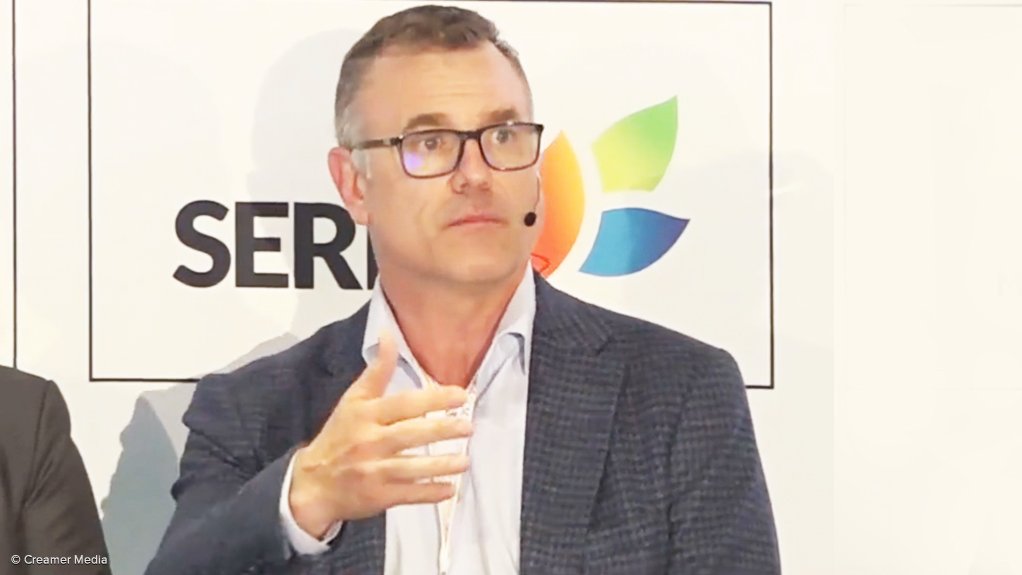INFRASTRUCTURE DEVELOPMENT IS THE FLYWHEEL OF OUR ECONOMY: RAMAPHOSA

By Thulane Madalane and Dipitsi Pitlo
Johannesburg: Since 1994, South Africa has focused on improving infrastructure to address historical imbalances, promote economic growth, and enhance social services. This has included expanding access to electricity, water, and sanitation, as well as investing in transport and telecommunications
The government has significantly increased access to electricity, especially in previously disadvantaged areas, through electrification programs and new power plant construction. According to Eskom, there are fourteen peaking power stations—with a total nominal capacity of 5,894.4 MW, encompassing gas turbine stations, hydroelectric (run-of-river), hydro pumped storage, and wind systems.
Water and sanitation projects, such as the Masibambane Water Programme, have aimed to improve access to clean water and sanitation while addressing significant backlogs. The government has constructed 18 new dams that store over 200 million cubic meters of water. Major projects from 1994 to 2023 include De Hoop dam, built from scratch near Groblersdal and Burgersfort, as well as dams located across various provinces including Qedusizi, Bivane, Braamhoek, and Spring Grove in KwaZulu-Natal; De Bos, Ceres Koekedouw, and Berg Rivier in the Western Cape; Boschmanskop, Driekoppies, Injaka, and Kettingspruit in Mpumalanga; Setumo in North West; Bedford in the Free State; and Nandoni in Limpopo, along with joint constructions in Lesotho (Katse and Mohale) and eSwatini (Maguga).
Transport investments have also surged, with the national road network expanding from 7,000 km to 27,501 km since 1994, as reported by SANRAL. This expansion has increased network capacity, accommodating rising vehicle numbers from approximately 5 million to 12 million. The aerospace sector has seen developments such as the construction of King Shaka International Airport and the modernization of O.R. Tambo International Airport’s facilities and the upgrading of Mthatha Airport’s runway underwent a significant upgrade in May 2013, allowing for larger aircraft to land.
Telecommunications infrastructure improvements have been vital for economic growth and social development too. New entrants like Vodacom, MTN, Cell C,Telkom and Rain dominate the national landscape, supported by diverse shareholders including public and private investment funds.
Public Works & Infrastructure Minister, Dean Macpherson, applauded Infrastructure South Africa for hosting the Sustainable Infrastructure Development Symposium (SIDSSA), where an updated Construction Book worth over R268 billion was unveiled, alongside top projects slated for project preparation funding.
“We have launched the second edition of the Construction Book, featuring over 250 projects valued at more than R268 billion—nearly double the value of the previous edition,” said Macpherson. He noted the significance of the top seven projects selected for support, which include the Boegoebaai Port and Rail Development, Durban-Johannesburg Container Corridor, Coega SEZ 100MW Solar Farm, and several wastewater and energy initiatives.
Highlighting the symposium’s role, Minister Macpherson called for expeditious partnerships in infrastructure investment to spur economic growth and job creation, stating, “Now is not the time for complacency—it is time to turn our words into action and truly make South Africa a country under construction.”
In a key address, President Cyril Ramaphosa emphasized the critical importance of infrastructure, describing it as the flywheel for economic growth and job creation. He reiterated the government’s commitment to building essential infrastructure—roads, ports, railways, and airports—that enhances national connectivity and attracts investment.“The Construction Book is a credible and detailed list of fully funded infrastructure projects, enabling us to de-risk projects and unlock capital from pension funds, commercial banks, and international financiers,” Ramaphosa remarked, citing projects underway in areas like Cape Town and eThekwini.
The President concluded with a vision for South Africa anchored in infrastructure development, promoting sustainable growth and improved livelihoods across the nation. “By placing infrastructure at the heart of our development agenda, we are not just constructing structures but building hope for a brighter future.”
The World Bank is teaming up with South Africa to boost infrastructure development in major cities like Johannesburg, Durban, and Cape Town through a massive $3 billion plan. This initiative is partially funded by a $1 billion loan and aims to enhance essential services such as water, sanitation, electricity, and waste management.
The World Bank’s involvement goes beyond funding, offering technical assistance, performance-based fiscal transfers to municipalities, and support for reforms in service trading. There’s compelling evidence that public-private partnerships (PPPs) are crucial for infrastructure development, as they attract private capital and accelerate economic recovery.
Major takeaways from Infrastructure Symposium
– The South African government plans to invest over R1 trillion in infrastructure over the next three years.
– The Infrastructure Fund has packaged 26 blended finance projects worth approximately R102 billion.
– The second edition of the Construction Book lists over 250 construction projects with an estimated value of more than R238 billion.
– The Top 12 priority infrastructure projects will receive project preparation funding from Infrastructure South Africa.
These developments demonstrate South Africa’s commitment to infrastructure development, which is expected to drive economic growth, create jobs, and improve living standards.
Thulane Madalane is the Editor in Chief of Timeless News and the Business Leader of Timeless Engineering Projects and Dipitsi Pitlo is a seasoned Economic Commentator and holds a Master of Development Finance degree from the University of Stellenbosch.










